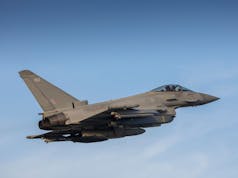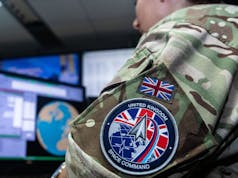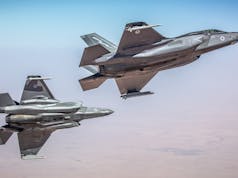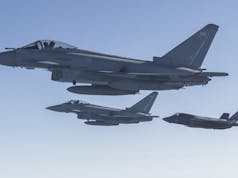Raytheon launched an AIM-9X Sidewinder Block II missile for the first time from a National Advanced Surface-to-Air Missile System (NASAMS), and engaged and destroyed a target during flight test supported by the Royal Norwegian Air Force at the Andoya Test Center in Norway.
“This flight test opened the door for NASAMS customers to add a vital, short-range layer to their ground-based air defense,” said Kim Ernzen, vice president of Raytheon Air Warfare Systems.
“Pairing Sidewinder with AMRAAM means forces can have complementary interceptors with a mix of sensors to better engage and destroy threats that may attempt to overwhelm a defense system.”
Jointly produced by Raytheon and KONGSBERG, NASAMS has been integrated into the US National Capital Region’s air defenCe system since 2005.
Seven countries have fielded NASAMS and two others are on contract for delivery.
“The NASAMS path of evolution continues by demonstrating yet another capability from the Raytheon family of missiles in the system, giving customers a true missile mix with AMRAAM, AMRAAM-ER and AIM-9X,” said Kjetil Myhra, executive vice president of Kongsberg Defence & Aerospace AS.













Love to no why all of the sudden after decades of dedicated launchers the utility of a single source launcher is now in fashion? Makes sense now as it did then so why waste so much time and resources on the obvious
It is truly a versatile system allowing operators a ‘pick n mix’ combination of ranges and capabilities from the short range but highly agile AIM9X, to the true medium range AIM-120 AMRAAM-ER. The AMRAAM-ER combines the guidance section from the AMRAAM and the larger rocket motor the Evolved Sea Sparrow Missile (ESSM) and achieves a 50 percent increase in range and a 70 percent increase in altitude over the system’s baseline AMRAAM (similar in capability to MBDA’s ASTER 30-SAMP/T).
Australia is one of those unnamed countries currently under contract for NASAMS. With all three donor Raytheon missiles already in service with the RAAF or the RAN the system is a no-brainer for the ADF.
Australian company CEA, suppliers of the AESA radar fitted to the RAN’s ANZAC frigates and specified for the Hunter Class (T26) frigate, will develop a tactical radar (CEATAC) mounted on a Hawkei and a larger truck mounted cueing radar (CEAOPS). Initial Operational Capability (IOC) is set for 2022-23. Australian industry will secure more than $1 billion of the total investment in NASAMS creating around 100 local jobs.
The LAND 19 Phase 7B short range ground based air defence (SRGBAD) requirement, delivered by NASAMS will eventually become the inner tier of Australia’s project AIR 6500 to develop an integrated air and missile defence (IAMD) capability.
While future submarines, frigates and the JSF attract all the media attention, the (IAMD) is perhaps the ADF’s most complex project ever. Under AIR 6500 the ADF plans to link together many of its key sensors and capabilities to create a system of systems (think NORAD) to allow the fastest possible detection, decision and response to the full spectrum of future air and missile threats to the Australian mainland and deployed forces – ultimately including a ballistic missile defence (BMD) capability.
The 2016 Defence Integrated Investment Program (IIP) cites an AIR 6500 program cost of $2-3 billion over the period 2018-30.
PARK A COUPLE ON THE Q.E FLIGHTDECK?
Wonder what the relative costs and benefits re having say 1 more F35 v having say 5 batteries of CAMM / meteor mix spread down the length and breadth of country.
How would uk deal with a saturation cruise missile attack without having medium to long range missile batteries?
P
I’ve mentioned this before on UKDJ Pete, including the land-based version of the Norwegian NSM to protect the UK, saving escort duties for our overstretched fleet.
They also produce the JSM for the F35 too (A/C internal only).
https://www.youtube.com/watch?v=1VRn3z4OA6M
It Won’t.
put a couple t the top of the rock pointing at spain!!
Nice system with a relatively small footprint. Would be nice if they made a mobile version to help protect troops on the move. This is something that the allies are sorely lacking. Stingers just won’t cut it anymore.
The Australian version of NASAMS will be mobile with both the CEA radar and the launchers mounted on Hawkei armouredb protected mobility vehicles (PMV-L)
Here’s a little bit more info on the Australian version for anyone who may be interested.
“Australian NASAMS to integrate locally designed active phased-array radars”
https://www.janes.com/article/87420/australian-nasams-to-integrate-locally-designed-active-phased-array-radars